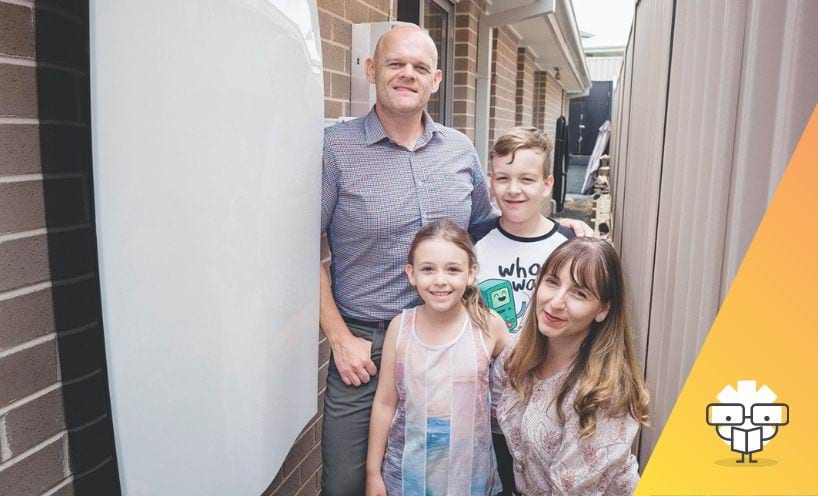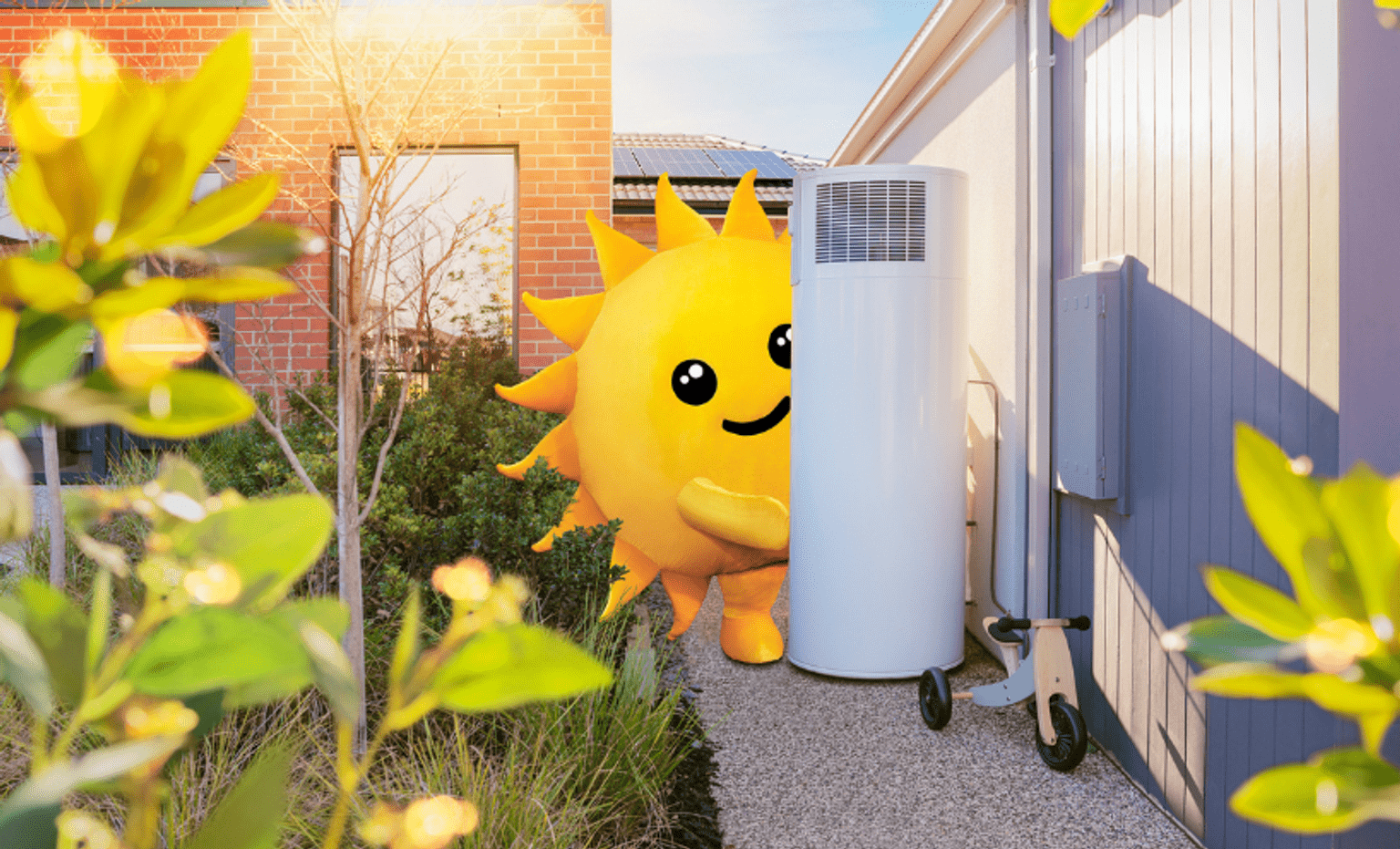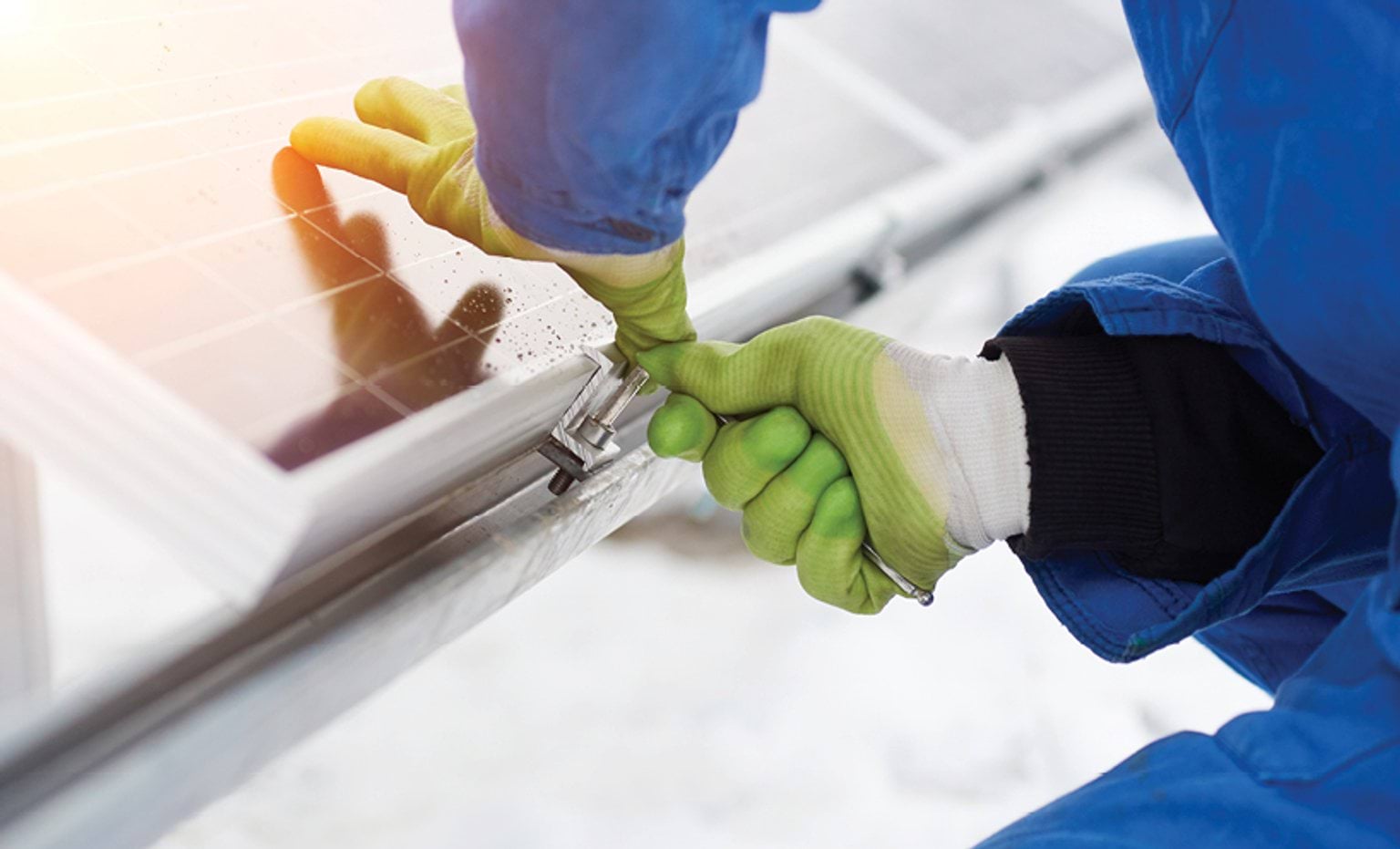- Date:
- 15 Dec 2021
Battery technology has developed rapidly in the last few years. Solar households connected to the grid now have more options to store their own renewable energy. They can use that electricity at a later time to reduce their bills, charge their battery at times of the day when grid electricity is cheaper, or install a system designed to provide backup during a power outage.
Solar PV with batteries doesn’t suit all households just yet, but it might be a perfect combination for you, and could set you up for significant savings on energy bills for many years to come.
Once a battery system is installed, households may want to consider joining an Aggregation program or a Virtual Power Plant trial (VPP), where a large number of rooftop solar panels and battery storage systems are linked, using smart technology to meet local demand for grid electricity.
Section 1: Why install a solar battery system at home?
With the steadily rising cost of electricity, many Victorian households are considering adding a battery to supplement their solar PV system. Consider whether a solar battery system is right for you now, or down the track.
It will help reduce your bills
Adding a battery will enhance your solar bill savings by being able to store solar-generated electricity for use later in the day. Households may also be able to charge the battery with electricity purchased from the grid at off-peak rates for further savings on bills, although charging from solar would remain the priority. With enough batteries and solar panels, imports from the grid can become rare events.
However, the battery’s high initial cost means that these bill savings might be cancelled out for many households. An exception is where your battery’s cost is subsidised. Find out how the Victorian Government’s Solar Battery loan can help pay for part of the cost of a system so you can enjoy more savings on bills.
More solar energy can be used onsite
Use more of your own solar-generated electricity, especially if you are often out during the day when your solar is generating and have high consumption in evenings and mornings (when it’s not).
Solar batteries benefit the community
Drawing from batteries in the early evening reduces your demand on the grid at peak times, which could help your electricity network provider delay expensive capacity upgrades (which consumers pay for indirectly).
Also, powerline voltage in some streets rises when everyone is exporting from their solar systems at the same time. If the voltage gets too high, solar systems cannot export and solar generation is wasted.
Battery systems can alleviate high voltage issues by reducing exports to the grid thereby minimising network costs which means savings for you and the community.
The environmental equation
If you want to help the fight against climate change right now, then installing a battery at home doesn’t immediately reduce fossil fuel generated electricity in the grid.
This is because batteries ultimately store electricity; they don’t generate or produce any additional renewable electricity to what a household solar system produces.
Installing more solar panels is of course immediately positive for the environment, as your household will produce more clean energy, displacing more fossil fuel generated electricity.
To achieve much higher deployment of renewable energy in the grid however, increasing amounts of energy storage is required, given that renewable generators like solar and wind do not produce electricity all the time. Storage can take the form of household batteries, larger grid-scale batteries, or major infrastructure like pumped-hydro assets.
As such, the more households that install batteries, the greater the potential to increase our use of renewable electricity in our electricity grid. So in this way, at a societal level or grid scale, increasing use of household batteries can actually assist in delivering more renewable energy and therefore is a benefit to our environment.

Solar battery loans
Solar Victoria is no longer taking applications for interest-free loans for the installation of a solar battery system.
Section 2: What incentives are available to Victorians for solar battery systems?
Adding a battery to an existing solar PV system is a significant investment, and for some households the outlay might be more than what you save on energy bills over the life of the battery.
Solar Homes Program solar battery loans
The Victorian Government’s Solar Homes Program solar battery loan is no longer applications.
Cheaper Home Batteries Program
The Commonwealth Government has announced that the Cheaper Homes Batteries Program will open on 1 July 2025. Further details are expected to be announced soon. You can sign up for updates here: Cheaper Home Batteries Program | Clean Energy Regulator.
Customers are advised that they should consider carefully their purchase of a battery when taking into account the discount from the Commonwealth Government’s program as specific details, including eligibility criteria and technical requirements are subject to regulations being made and may change.
The benefits of installing a battery
Some households may choose to participate in an aggregation program or join a Virtual Power Plant (VPP) trial to help get the most out of the program for participating households, non-solar households and support for the electricity grid.
In 2020-21, an ‘aggregation’ option for households was launched. This expansion leveraged the benefits of battery aggregation and broaden the benefits of the program for Victorian households and the electricity grid. The pilot is now in a research phase and is learning from customers who have in aggregation projects and support Victoria’s transition to a renewable energy future.
Aggregation and VPP’s are a new way to build a power station. Rather than one big facility, a VPP aggregates many smaller decentralised energy resources (DERs) – be it solar, wind or storage – across several locations or households. By using smart technology, all these resources are combined into one large entity, and controlled from a distance by complex algorithms.
The algorithms can focus on different goals: resilience during power outages, grid balance, reduced energy fees or a maximal use of green energy.
VPP’s are efficient and flexible, with their ability to deliver peak load electricity or load-following power generation on short notice. This decentralised (distributed) approach to electricity generation can be effective in controlling grid voltages, and the distributed aspect of such systems means less strain on single areas of the grid.
With the advent of smart, remotely controlled domestic-scale batteries it has become possible for energy companies to remotely sync up hundreds or even thousands of their customers’ batteries to provide power to the grid when demand is highest and absorb grid energy when there is excess.
Solar Victoria battery product list only consists of systems that are VPP-ready to enable Victorians to participate in VPP programs.
Benefits of participating in aggregation projects or a VPP program
- receive compensation for sharing your stored solar energy with the VPP network
- make the most of the solar power you generate
- balance the supply and demand of energy for fewer disruptions
- reduce network costs for all Victorians
- increase grid resilience
- enable greater uptake of Distributed Energy Resources (DER)
Most aggregation and VPP programs have specific product requirements, so you will need to review these to ensure the system you are installing is capable of participating in the VPP you want to participate in. You should also do your own research and ensure that you fully understand the individual features and benefits of different VPP programs.
Section 3: Solar battery systems explained
Find out how a solar battery works with your solar PV system to store energy for household use.
How does a solar battery system work?
In a typical home with solar panels, part or all of your energy usage may be met by solar generation while the sun is shining. Any excess solar energy is exported to the grid. Shortfalls, most often experienced in the evening and overnight, are met by importing electricity from the grid.
When you have a battery coupled with a solar PV system, the excess solar energy not used at home during the day is first used to charge the battery, before exporting any excess to the electricity grid.
There are various battery products available that have a wide range of functionality and performance. Some batteries can be charged from grid electricity during off peak times (e.g. overnight).
The energy stored in a solar battery system is used in the home whenever there is energy usage above the level produced by the solar panels (typically in the evening peak). This battery-stored energy can power home appliances before any energy is imported from the grid.
Once the stored energy in the battery is depleted, grid power (or an alternative electricity generator) will be needed to supply household energy requirements until solar generation is available the next day.
Stand-alone (off-grid) solar systems use batteries. These systems are common where the house or site has no connection to the grid at all, and typically comprise solar panels, inverters, a battery bank and a backup petrol or diesel generator – primarily used to support the system during cloudy winter periods.
Stand-alone systems are not eligible for a solar battery loan, but off-grid households can apply for a solar panel (PV) rebate.
Is my existing solar PV system battery-ready?
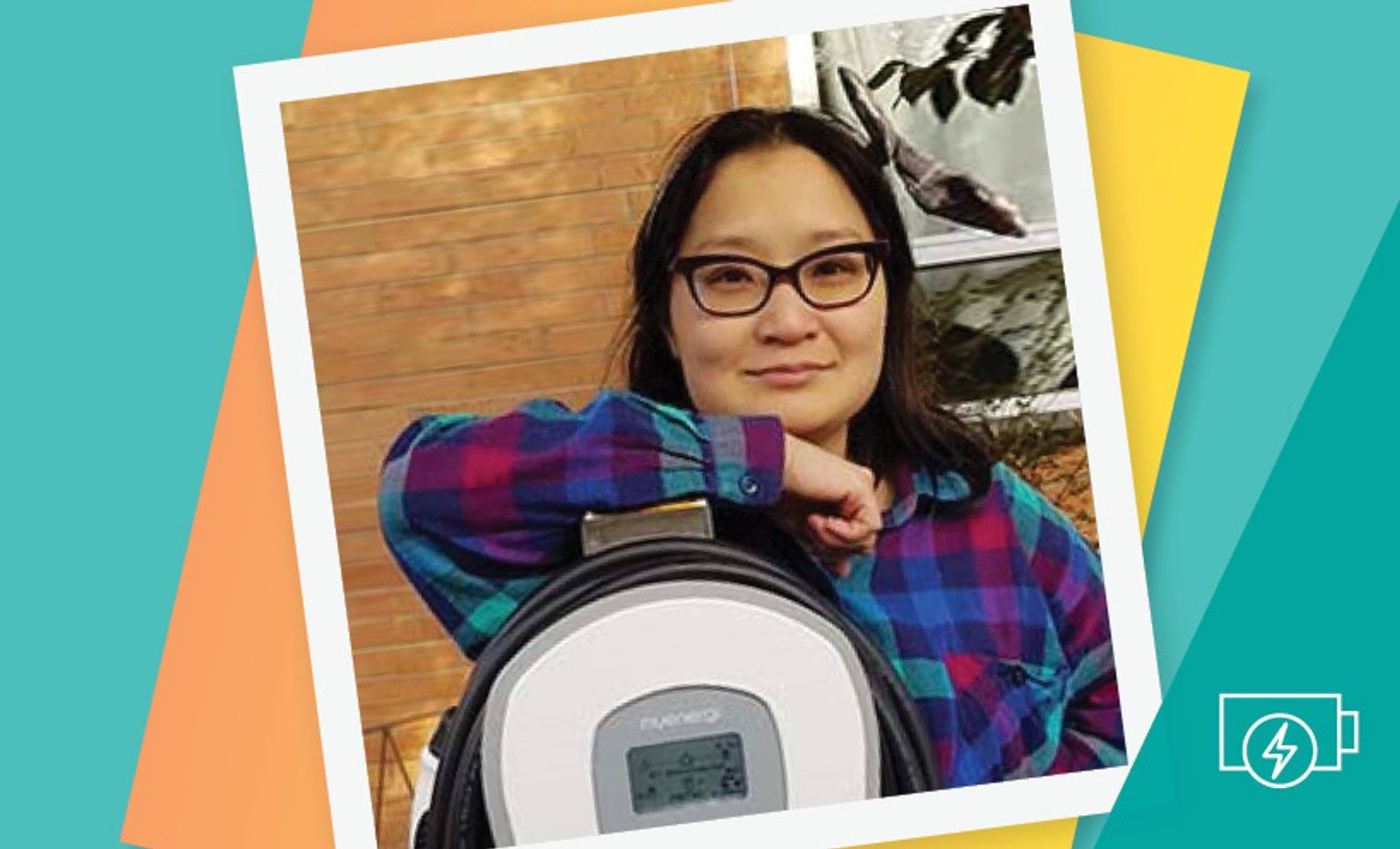
How does a solar battery system work?
Many households would like to understand how a battery system works before adding one to their PV system.
Will adding a battery ensure I have power during a power outage?
Grid-connected solar PV systems, with or without a battery, are designed to switch off during a power outage, to protect those potentially working on nearby electricity lines. Standard solar battery systems also do not provide backup power when the grid fails.
However, some solar PV systems can continue to work during a power outage, if they have a battery designed to provide backup power supply. This system disconnects the house from the grid for safety. The ability to provide energy when the grid is down depends not just on the battery, but also the rest of the system design and which inverter is used.
Designing a solar battery system with battery backup is becoming more common, but make sure you tell your installer that’s what you want, so the system can be designed properly with the right components.
Can I charge a battery overnight?
Some households want to take advantage of off-peak electricity rates and charge their battery from the grid at times when their system is generating less solar, in winter for instance. Your battery can do this if it has the right functionality and smart software.
Typically, only AC-coupled systems can charge from the grid, although DC-coupled systems can be set-up to charge from the grid.
Some smart software can integrate battery charging from the grid with weather forecasts, so that the system can predict insufficient solar generation the following day and adjust the level of pre-charging from the grid required in the early morning, prior to the solar charging, to ensure the battery is full before the evening peak.
The functionality required for grid-charging does come at a cost – making these types of batteries more expensive than regular grid-connected solar battery systems.

Solar battery loans
Solar Victoria is no longer taking applications for interest-free loans for the installation of a solar battery system.
Section 4: Solar battery systems and components
The installation of solar battery systems has become simpler with the development of lithium-ion battery chemistry and streamlined, modular storage systems.
Battery chemistries
Households must install a battery from the Solar Victoria products list to qualify for a solar battery loan. Currently the list includes only lithium-ion battery types.
Battery set-ups
Most battery systems these days combine the batteries and other components in a pre-configured ‘storage in a box’ module for connection to a solar PV system.
These products include an inverter in the same box as the battery. The product is connected to your existing house switchboard, separately from the solar panels and solar inverter. Such a system makes for an easy battery installation or retrofit to an existing solar PV system. The battery can be located far from the solar inverter, for example in a cool location to maximise battery lifespan.
Installation is usually quick as much of the wiring between components has been done, and it often makes for a neater system as many components and their associated wiring are enclosed in a single cabinet. Storage units may be modular so that multiple units can be used to make up the required capacity, and some are designed to have extra battery modules slotted into the case to increase capacity.
Other battery products include the battery and supporting components such as safety switches, cooling devices and battery management system (BMS) only, but don’t include an inverter.
These products must be connected to a compatible inverter or a charge controller, which prevents overcharging.
Typically, they are connected to a ‘hybrid’ inverter, which includes a charge controller to allow connection of a DC-coupled battery.
Renew magazine’s Energy Storage Buyers Guide has more detail on the battery types available.

Off-grid vs. grid connection
Find out the difference between off-grid and grid-connect solar battery systems, and how both systems can help you be more independent of the electricity grid.
Understanding inverters
Most currently installed grid-connected solar PV systems will be using a gridinteractive inverter. A grid-interactive inverter converts the energy from solar panels into mains power and feeds it into the house’s electrical wiring—no storage is involved.
When you bring energy storage into the equation, it gets a little more complex, as the inverter needs to deal with both a generation source (like a solar PV system) and batteries, and possibly also the grid. This is when a hybrid inverter is used.
Hybrid inverters can have a vast range of features and this means that they are often capable of being used in place of other types of inverters. For example, you might install a hybrid inverter in a simple grid-connected solar PV system without storage with the view to adding batteries at a later date.
However, the solar industry is evolving very fast, and if you try to purchase a battery in a few years’ time, you may not find one compatible with your ‘old’ inverter. Another approach is to initially install a relatively cheap solar inverter, and then replace it with a hybrid inverter later on when you want to add a battery.
Find out more about inverters in Renew magazine’s Inverter Buyers Guide.
Battery add-ons and smart technology
Talk to your installer about how your proposed system will charge and interact with the grid and whether it needs any add-on systems.
Batteries are not the simple devices they once were. Many storage systems contain considerable computer processing power combined with algorithms that allow them to make the best of the energy available, based on predicting energy consumption patterns from past usage and external data, such as wholesale electricity prices and weather data.
Some systems can use local weather data from online weather services to predict how much solar energy is likely to be available the next day and then charge the battery from the grid overnight (at cheaper rates) if solar energy input is likely to be low.
By combining this sort of data, the battery can decide when it should be charging and discharging to make the most effective use of the available solar energy as well as minimising grid import (and export, if feed-in tariffs are low).
Even for storage systems that don’t have these features built in, add-on energy management systems can provide this sort of functionality.
What warranties are available?
You want your battery to last as long as the warranty and hopefully well beyond. A battery’s lifespan will be influenced by a number of factors including the number of cycles, the charge or discharge rate and the depth of discharge (DoD) employed in its everyday operation.
Systems installed under the Solar Homes Program must have a minimum five-year warranty on the whole system including the workmanship and a minimum seven-year performance warranty is required under daily cycling operation.
As you would expect, system warranties vary by supplier and component, but you should seek out a ten-year warranty for the battery and any in-built or associated inverter if you can. Some manufacturers provide warranties for specific time periods, while other warranties can refer to a specific number of cycles based on a pre-defined cycling profile, for example 8000 cycles at 80 per cent DoD. Discharging beyond this point may affect the warranty or lifespan.
Battery lifespan may be more than the warranty implies, provided that the system has been correctly sized and the system is used within its recommended cycle depth and frequency ratings.
A workmanship warranty should match both the battery and inverter warranty (ideally 10 years), so that if a battery or inverter require repair or replacement, the labour is included free-of-additional charge.

Solar battery loans
Solar Victoria is no longer taking applications for interest-free loans for the installation of a solar battery system.
Section 5: Working out the costs and benefits of a solar battery system
A battery system can help some solar households cut their energy bills even further, if the estimated savings on electricity bills are higher than the upfront cost of the system.
Are batteries a good investment for you right now?
Batteries can be relatively expensive when compared to the energy bill savings they can deliver.
It is worth considering your own energy usage patterns to determine if a battery can be beneficial for you. Renew modelled the payback time on battery systems installed with a new solar PV system, or retrofitted to existing solar PV systems, for households at home more often throughout the day and households that use a smaller amount of electricity mostly later in the day.
The modelling shows that payback time within the recommended 10-year warranty period for a battery can be hard to achieve without careful consideration to the system sizing. For example, a small 8kWh battery system on a 5kW solar PV system has a much quicker payback time than other sizing configurations, using a solar battery loan.
- Battery size – the payback time is generally quicker for a small battery than a big one, although small batteries can often cost more per unit of energy stored.
- New solar and battery – ideally a battery will pay for itself within around 10 years, approximately the lifetime of some of the system components.
- Existing solar – currently, the best cases for retrofits are for high-consumption houses with large solar systems and higher, Time of Use (ToU) tariffs.
- New solar – a new, correctly-sized, rooftop solar system without a battery currently pays for itself sooner than one with a battery.
- Financials – payback times are longer for battery storage however they are decreasing, making the case for batteries increasingly popular.
- Retail energy tariff – a Time of Use tariff for purchasing energy from the grid is better than a flat tariff for solar with or without a battery, often accelerating payback by a year or two. To find the best energy tariff for you visit Victorian Energy Compare.
Always work out whether or not any proposed battery system is a good investment before signing a contract with a retailer, and use Renew’s simple online calculator to help assess the economics for your situation.

Off-grid vs. grid connection
Find out the difference between off-grid and grid-connect solar battery systems, and how both systems can help you be more independent of the electricity grid.
I’m not ready for a battery system just yet, what else can I do?
There are other ways to get more out of your solar if a battery system isn’t for you at the moment.
While a battery allows you to store your solar energy for use at a later time, if you can shift some of your biggest electricity usage to the middle of the day, you can make much better use of the solar energy you generate without the need for a battery.
A good example of this is to use a heat pump hot water system (or even a traditional resistive electric storage hot water system, if you have a lot of excess solar), and use a timer to run it in the middle of the day. This allows the hot water system to store the excess solar energy in the form of hot water—effectively making your water heater a form of battery.
The same applies to other loads, such as a heat pump hydronic heating system, which can store solar electricity as heat in a large water tank for use in the evening. Or you can simply shift other loads such as washing machine and dishwasher use to the middle of the day.
While the latter isn’t a form of energy storage, it does make effective use of solar electricity at the time of generation, reducing the need for battery storage. Many appliances have in-built timers making it easier to shift run-times without the need for additional timers.
Section 6: Planning your solar battery system
It is important to understand the impact that system size and price can have on payback time.
What size battery do I need?
Choosing the right battery size for your needs will mostly depend on the size of your solar electricity system, how much energy you typically consume overnight and whether you want backup during a power outage.
To save the most on electricity bills it is generally best to buy a battery that you will regularly charge and discharge to the recommended level. You want to be able to store any excess solar electricity generated each day and ensure that the majority of that stored energy is used later on.
At the same time, it is wise not to overuse a battery, for example by fully charging and discharging two or three times a day. Doing this might shorten its lifespan.
You can usually set this up in an Energy Management System or similar app that helps to optimise the system.
You should also consider any changes you might want to make further down the track, such as switching from gas hot water to electric heat pump, for example, or adding more PV panels in the future to cover the needs of a growing family.
The best way to choose the right battery for your needs and budget is to get an independent assessment from an energy expert or accredited installer or supplier. Renew’s advice services can help with determining system size and the payback time.

Solar batteries: What you need to know about backup power
Solar PV and battery systems can provide stored energy when the power is out if they are designed with backup power.
Planning upgrades or system expansion
Some battery systems are modular, allowing you the option to increase your system’s capacity later, for example, when your energy use increases or when funds become available. This is typically harder in a DC-coupled arrangement. The ability of your existing battery to be upgraded needs to be confirmed with your installer prior to purchase.
Designing a system that provides backup during a power outage
A home battery system can be designed to provide backup during a power outage, however, not all storage systems are designed to provide energy when the grid is down, and this may depend on the storage system, the system design and inverter used.
Your installer will be able to provide you with more guidance; just make it clear what your requirements are when looking for a system.
A pre-approval from your Distribution Network Service Provider is an eligibility requirement for a battery rebate to ensure that the battery can be safely connected to the network.
Unfortunately, not every household may be able to receive a pre-approval for various reasons; including the strength of the local grid. It is also possible connections approval provided by the DNSP are subject to export constraints. The Victorian Distribution Code regulates the distribution and connection of electricity to customers, and safety of community is a key priority.
Planning a system that is Virtual Power Plant ready
All batteries on Solar Victoria’s products list are aggregation and VPP ready and comply to Australian Energy Market Operator’s (AEMO) minimum specifications. This is to enable your household to participate in Virtual Power Plant Trials, where many households are linked via cloud-based systems to work like a small power station.
Benefits of participating in aggregation projects or a VPP program
- receive compensation for sharing your stored solar energy with the VPP network
- make the most of the solar power you generate
- balance the supply and demand of energy for fewer disruptions
- reduce network costs for all Victorians
- increase grid resilience
- enable greater uptake of Distributed Energy Resources (DER)
Most aggregation and VPP programs have specific product requirements, so you will need to review these to ensure the system you are installing is capable of participating in the VPP you want to participate in.
Your system needs certain features to be aggregation and VPP-ready, including:
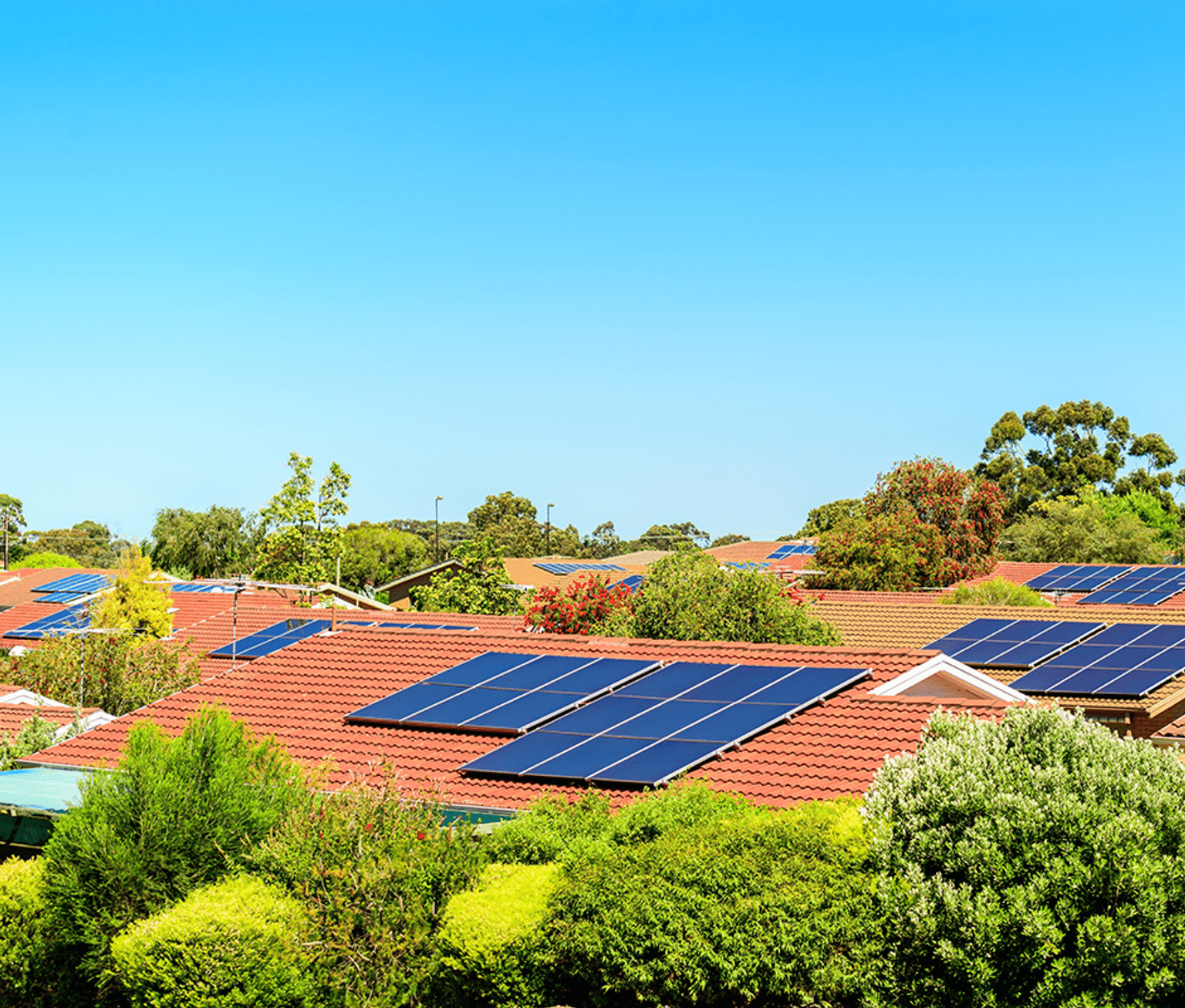
Solar assessment calculator for your home
Use this solar calculator for a free and independent assessment of the best size solar system for your home, plus an estimate of the cost and your potential bill savings.
Siting considerations
Most home batteries can be installed outdoors, however, their lifespans will be improved by a stable, cool temperature, so try not to locate them in direct sun or in an uninsulated, unshaded metal shed.
It’s also important to make sure that any enclosure is vermin-proofed, cannot be accessed by children and displays appropriate signs relating to safety, warnings and shutdown procedures.
Installation and safety considerations
- Like most electrical equipment, batteries are generally safe if they are installed correctly.
- Make sure there is appropriate space around the battery unit and position the battery away from any potential hazards.
- It’s important not to store heavy household equipment on top of a battery and keep the area clear of obstacles.
- Note that batteries cannot be installed in domestic habitable rooms in Australia as required by regulatory safety standards, including Australian Standard AS/NZ 5139 2019.
- Don’t put flammable objects or those that could conduct electricity in or on the battery enclosure.
- Make sure the battery is maintained according to the guidelines given by your installer.
- The safety risks associated with actual cell chemistries differ depending on the chemistry. Discuss any potential risks with your installer so they can be mitigated.
- Your CEC-accredited installer will be aware of these installation standards. These guidelines are discussed further in Section 7 Finding the right retailer.
Insurance
Solar panels and batteries are high value items so include them in your home insurance policy and check any insurance clauses and requirements for solar battery related issues prior to installation.

Solar battery loans
Solar Victoria is no longer taking applications for interest-free loans for the installation of a solar battery system.
Section 7: Finding the right retailer and steps to installation
A good retailer can help you plan a battery, or solar and battery system to slash your energy bills.
Steps to purchase, install and connect a solar battery system at home
Keep in mind the following steps to installing a solar battery system at home:
- Read this Buyers Guide and the Solar Panel (PV) Buyers Guide to learn about solar and battery systems.
- Gather your questions and seek independent advice
- Confirm your own household’s requirements – see the section on Planning Your Solar Battery System
- Confirm battery hosting capability with a Distribution Network Service Provider (DNSP)
- Seek recommendations on retailers that manage installation and then contact those who are appropriately accredited for quotes
- Select your preferred retailer. Make sure the quote meets your needs, using our checklist in this Buyers Guide can help
- Sign a contract with your retailer
- Install your new system
- Connect your battery system to the grid, arranged by your installer
- Enjoy your new energy storage system and reduced energy bills.
Finding a retailer or installer
As with all major purchases, you should carefully consider both price and quality when buying a system.
Solar Savvy Tip: Always get at least three quotes from New Energy Tech Approved Sellers for the same size system. Note that a quality system offering a long and useful life may cost more and be more worthwhile.
New Energy Tech Approved Sellers
Solar PV and battery retailers in the Solar Homes Program must fulfil our requirements, including being a New Energy Tech (NET) Approved Seller.
This means they have committed to high standards across sales and marketing, quotes and contracts, delivery and installation, and warranties and support.
Customers doing business with a NET Approved Seller can be confident they are getting clear, honest information, quality installation, and good warranties.
Check the NETCC website for a list of NET Approved Sellers in your area and our list of authorised solar retailers to see if they are participating in our program. Also look into websites that can make it easier to obtain multiple quotes without having to ring around.
For more information about what we require of retailers in our program, see Consumer protection.
Accredited installers
The person who installs your system also needs to hold accreditation with battery endorsement, and must hold an unrestricted Class A Electrical Licence registered with Energy Safe Victoria.
A good installer will help you plan the right system to suit your household now and into the future. They will recommend the best position to install your system to generate as much electricity as possible.
For more information about what we require of installers in our program, see Consumer protection.
Consider how system faults will be handled
A warranty is only as good as the company that provides it. If the company disappears in a few years, you might have difficulty making a warranty claim should faults or failures occur. It’s not possible to know the future of any solar or battery system manufacturer or installer, as some of the biggest players over the years have simply disappeared. Seeking out a retailer or installer with a long history in the business helps.
Also, be aware that under Australian Consumer Law, warranties are required to be honoured by product manufacturers even if the local retailer has gone out of business, so make sure you receive and keep information about the manufacturers of all the different components of your system, and the different warranties on each component.
What not to do when engaging an installer or company
Installing a solar battery system is something that you want to get right: after all, you only get one shot at the rebate, and a well-installed system with quality parts can continue to save you money for many years to come. A poorly-installed system or one with cheap components can be nothing but trouble.
Don’t buy a solar battery system from a door-to-door salesperson, or from a salesperson who cold calls you on the phone. If you have signed a contract in this way, take advantage of the 10-day cooling off period under consumer law to cancel the contract, and then take your time to do your homework, plan your system and find a quality battery installer.

Solar scams
Solar scams do exist unfortunately, with offers too good to be true.
If you are the target of a scam, please report it to the Australian Competition and Consumer Commission (ACCC) via the SCAMwatch website or by calling 1300 795 995.
Do I need approval from the electricity distributor to install a battery?
Your installer will manage the grid connection process for you. The process is often straightforward, although additional time or fees may apply when connecting larger systems.
To connect a solar or solar battery system to the grid, your installer applies to your local electricity distributor. A rooftop solar system always requires application approval from the electricity distributor.
If you are installing a battery with solar, it will be managed by your installer as part of the same approval process. If a battery is retrofitted to an existing solar PV system, an amendment to the connection agreement is required.
Check the exact requirements with your installer and/or electricity distributor.
Installer and quotation checklist, including tips for evaluating quotes
Grid-connected batteries for solar battery systems are relatively new. None of the currently available products in the Australian market have been around for more than about five years.

What to look for in a solar quote
Understand what to look for in a quote when you buy rooftop solar for your home.
This Buyers Guide was developed in conjunction with Renew. All photos have been supplied with permission and are subject to copyright. Please contact comms@team.solar.vic.gov.au regarding permissions for use of content and images.


